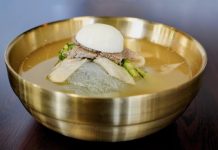
After 42 years, the annual Michigan Wine Competition, a longstanding institution in the state’s wine industry, might be coming to an end.
The annual event brought in nationally renowned judges to join the best wine palates in Michigan and evaluate each year’s production of wines, awarding the top wines gold, silver, and bronze medals.
The State of Michigan, which has been running the event through the Department of Agriculture’s Grape and Wine Industry Council, will no longer coordinate the event due to changes in its governing regulations and a new emphasis on where funds should be directed. Following the announcement, the Traverse Wine Coast — a group of wineries from the Traverse City area, Leelanau, and Old Mission peninsula — said it would seek ways to continue the competition. How that could be done is unclear.
“The Michigan wine competition has great value to our industry,” says Paul Hamelin, the owner of Verterra Winery in Leland. “It’s one of the few independent sources by which our wines are judged against each other.”
Full disclosure: I served as the Michigan Wine Competition’s superintendent and began judging in 1984. The competition has since become a victim of development in another area: beer and cider, two mega-growth industries that have surpassed wine in size in just a few short years. Within the last year, the beer and wine industry gained control of the Grape and Wine Industry Council. It refocused its function to include beer and cider and redirect some of its funding to such areas as research.
The competition was an independent tool that gauged the quality of Michigan wines by using the mix of outsiders and locals to tell wineries how they are doing, quality-wise. A little less than half the state’s wineries, about 60, entered their wines yearly. Sometimes, they got good news and a gold medal. Other times, they got no medal, and a string of judges’ evaluations on problems or what seemed to have gone wrong in their wines.
Since 1977, the year the competition was created, it was located at old Michigan State Fair grounds on Eight Mile Road in Detroit. That year, the industry consisted of less than a dozen wineries. Since then, competition has become a fixture in Michigan’s wine industry. Today, there are 145 wineries and their wine production has increased 66.7 percent over the course of the last five years.
Michigan is now the sixth largest wine-producing state in the country, depending on how you count. It makes 2.7 million gallons of wine a year and is a $5.4 billion industry. Not exactly insubstantial.
Over the years, the competition has invited some of the most talented wine experts in the country and in Michigan, 24 judges, who comprise six judging panels, and taste the wines “blind.”
Many of those judges are also experienced winemakers, others are certified members of the Court of Sommeliers, professional wine tasters who spend a minimum of three years studying and must then sit for a rigorous oral examination. Others are wine retailers and restaurateurs.
It’s sad to see something so constructive get so easily ousted. Across 42 years, the wine competition has done a lot. It’s become professionally refined and has a lot the beer and wine industry — new kids on the block — could learn from. Ten to one, they’ll be running their own competitions before too long. It’s a natural next step. So, why not let this one be?
|
| Ěý |
|








